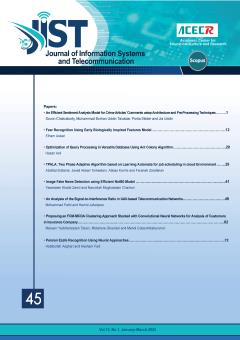Optimization problems are becoming more complicated, and their resource requirements are rising. Real-life optimization problems are often NP-hard and time or memory consuming. Nature has always been an excellent pattern for humans to pull out the best mechanisms and th
More
Optimization problems are becoming more complicated, and their resource requirements are rising. Real-life optimization problems are often NP-hard and time or memory consuming. Nature has always been an excellent pattern for humans to pull out the best mechanisms and the best engineering to solve their problems. The concept of optimization seen in several natural processes, such as species evolution, swarm intelligence, social group behavior, the immune system, mating strategies, reproduction and foraging, and animals’ cooperative hunting behavior.
This paper proposes a new Meta-Heuristic algorithm for solving NP-hard nonlinear optimization problems inspired by the intelligence, socially, and collaborative behavior of the Qashqai nomad’s migration who have adjusted for many years. In the design of this algorithm uses population-based features, experts’ opinions, and more to improve its performance in achieving the optimal global solution. The performance of this algorithm tested using the well-known optimization test functions and factory facility layout problems. It found that in many cases, the performance of the proposed algorithm was better than other known meta-heuristic algorithms in terms of convergence speed and quality of solutions. The name of this algorithm chooses in honor of the Qashqai nomads, the famous tribes of southwest Iran, the Qashqai algorithm.
Manuscript profile


